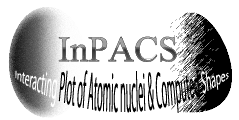Tsukuba CCS-RIKEN Joint Workshop on microscopic theories of nuclear structure and dynamics (2016.12.12-16)
2016年11月9日 | 新着情報
The First Tsukuba-CCS-RIKEN joint workshop on “Microscopic theories of nuclear structure and dynamics” will be held at the RIKEN Nishina Center, Wako, Japan, on December 12-13, 2016, and the Center for Computational Sciences, University of Tsukuba, Tsukuba, Japan, December 14-16, 2016.
Many recent developments in nuclear structure theory are driven by experimental data on exotic nuclei from radioactive ion beam facilities, and by high performance computing. The challenge for microscopic theories of nuclear structure and dynamics is the development of a coherent theoretical framework applicable to many new phenomena at the limits of large isospin and weak binding. To this end, novel computational techniques, applicable to pre-exascale computer systems, enable quantified predictions.
The joint workshop will be held at two sites. At the RIKEN Nishina Center, the discussion will be focused on topics related to the recent and planned experiments at RIBF with the purpose of accelerating the collaboration between experiment and theory. At the Center for Computational Sciences, University of Tsukuba, the workshop will focus on theoretical techniques, especially nuclear density functional theory and its extensions, as well as related computational methods.
Dates and Venues
December 12 – 13, 2016, RIKEN Nishina Center
December 14 – 16, 2016, Center for Computational Sciences, University of Tsukuba
Organizers
Y. Hashimoto (Univ. of Tsukuba)
N. Hinohara (Univ. of Tsukuba, Chair)
H. Liang (RIKEN, co-chair)
T. Nakatsukasa (Univ. of Tsukuba)
W. Nazarewicz (MSU)
T. Uesaka (RIKEN)
K. Yabana (Univ. of Tsukuba)


